How to Practice Golf: How Good Does Your Wedge Game Have to Be to Play On a Professional Golf Tour?22/9/2012
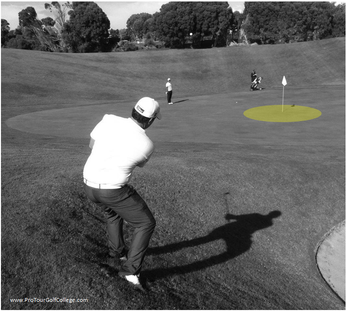 Golf is a game of score. I know I have said it before but it's true, and if you want to become a successful amateur or professional golfer you have to become a great wedge player and a great putter. Because there’s no point perfecting your putting stroke if you can’t hit your green-side and approach wedge shots close enough to the hole to give yourself a good chance of making the putt. So how close do you need to hit your green-side and approach wedge shots to make the putts? This is the key question in golf development from the point of view of producing a lower competitive score average. In today's article we will look at just how good you should aim to be if you want to compete successfully on a professional golf tour, or you want to become a leading amateur golfer. Using shot-link statistics from the PGA Tour we'll look at how good the best on the PGA Tour are when they face wedge shots from around the green and out to 100 yards. 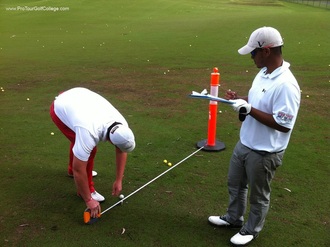 Measuring Approach Wedge Proximity to Target We'll start with chip shots around the edge of the putting surface and work our way out from there, and we'll look at three statistics;
At Pro Tour Golf College we measure these statistics carefully and accurately because they will define how good you are with a wedge in your hand, and how good you can be. 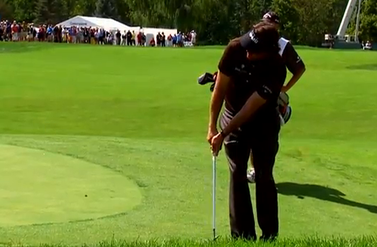 Chip Shots From the Fringe The average distance a top ranked PGA tour player will hit his chip shots from the fringe is 2 to 3 feet from the hole. From this distance range they will make 95 to 99 percent of the putts they face which basically means that they don't miss very often from this distances close to the edge of the putting surface. If you're ranked in the top 50 for this statistic on the PGA Tour you will get the ball up and down 90 to 100 percent of the time. 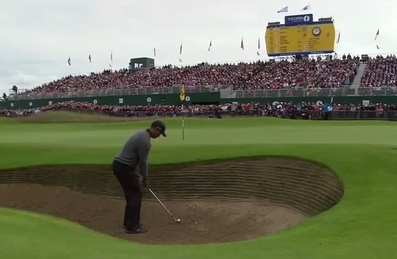 Greenside Sand Shots Within 20 Yards of the Pin The average distance a top ranked PGA tour player will hit his sand shots from a greenside bunker is 7 to 9 feet from the hole. What this means is that from all types of sand and all types of lies and positions in a bunker they will hit their ball to within these distances of the hole most of the time. From this distance range (7 to 9 feet) they will make 43 to 56 percent of the putts they attempt. If you're ranked in the top 50 for this statistic on the PGA Tour you get the ball up and down between 57 and 73 percent of the time from within 20 yards of the pin. 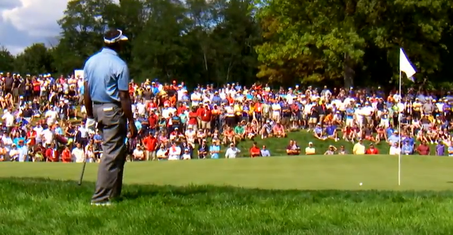 Greenside Trouble Shots From the Rough When a top ranked PGA Tour player misses a green in regulation and has to play from the rough within 30 yards of the green they are very good at getting the ball up and down. If you're ranked in the top 50 for this statistic you get the ball up and down more than 58 percent of the time. This means that top PGA pro's are as good out of trouble lies in the rough as they are playing out of bunkers. This is important to take notice of. Top golfers turn trouble shots into pars and birdies when they miss greens. The distance range a top ranked PGA tour player will hit his shot from the rough to the pin consistently is between 6 and 8 feet. Which means that from all types of lies and positions within 30 yards of the edge of the green in the rough they will hit their ball to within these distances of the hole most of the time. From the distance range (6 to 8 feet) they will make 49 to 65 percent of their putts. 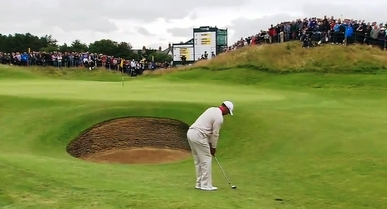 Greenside Pitch Shots When a top 50 PGA Tour player misses a green in regulation and has to play a pitch from 20 to 30 yards to the pin they are very good at getting the ball up and down. If you're ranked in the top 50 for this statistic on the PGA Tour you get the ball up and down 55 to 65 percent of the time. The distance range a top ranked PGA tour player will hit his shot to the pin consistently is between 7 and 9 feet. What this means is from all types of lies and positions within 30 yards of the pin they will hit their ball to within these distances of the hole most of the time. From this distance range (7 to 9 feet) feet they will make 43 to 56 percent of their putts. 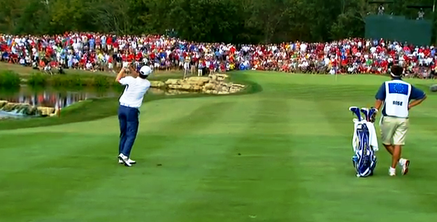 Approach Wedge Shots 50 to 75 Yards In this distance range a top ranked PGA tour player will hit his shot from 50 to 75 yards of the pin consistently between 6 and 12 feet from the pin. What this means is from all types of lies and positions from the fairway when 50 to 75 yards of the pin they will hit their ball to within these distances of the hole most of the time. From this distance range (6 to 12) feet they will make 30 to 65 percent of their putts. Of recent times Justin Rose has been the best in this category hitting his wedge shots on average 6 feet 11 inches from the hole. 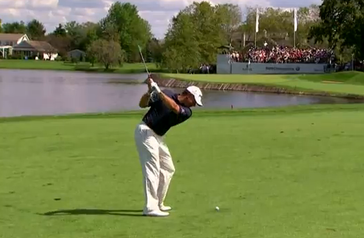 Approach Wedge Shots 75 to 100 Yards In this distance range a top ranked PGA tour player will hit his shot 75 to 100 yards of the pin consistently between 12 and 16 feet from the pin on average. What this means is from all types of lies and positions from the fairway when within 100 yards of the pin they will hit their ball to within this distance range of the hole most of the time. From this distance range (12 to 16 feet) they will make 20 to 30 percent of their putts. Putts made % = Distance from Hole % There is a strong correlation between your proximity to the hole results of your greenside or approach wedge shots and how many putts you can make. We teach our students at Pro Tour Golf College to study their numbers closely and then go to work on improving their greenside and approach wedge skills because we know that hitting closer to the hole will give them their best chance of making more putts and ultimately producing a lower competitive score average. Do you practice measuring how far you hit your golf shots from the hole in any of your practice sessions? My question to you is how can you improve your greenside and approach wedge skills if you don't know what your average distance from the hole is? It is so much easier to generate improvement with your greenside and approach wedge skills if you can determine how far (on average) you hit your shots from the pin. Your normal statistics don't tell you this, which is a problem if you are motivated to get better and are spending a lot of time practicing your golf skills. Ask yourself this question; "what is more important, my scrambling percentage from a greenside bunker or what my average distance from the hole is from the sand?" Let's say that your scrambling average is 45 percent. In other words for every hundred greenside bunker shots you play 45 lead to a score of par or better. What this information doesn't reveal however is where your golf ball was on the green in relation to the pin. 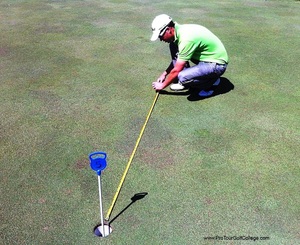 What if your average distance from the hole was 7 feet. PGA Tour professionals make about 56 percent of their putts from this distance. Proximity to the hole statistics help you to more easily work out what you should spend more of your time working on. It is not difficult to do if you have someone you can work with. Basically you hit 10 golf shots at a time and mark with tees or ball markers where the ball comes to rest and then using a tape measure you determine the exact distance your ball is from the hole. Once you have hit the 10 golf shots and measured their distance from the hole, divide the total number by 10 to determine your average distance from the hole. Proximity to the hole is an underrated statistic which very few elite level amateur and professional golfers use to determine how good they really are with a wedge in their hand.
You should strongly consider adding it to your practice statistics so you can more effectively determine how good you are and more importantly how good you can be when you're hitting shots into the green out to 100 yards. Lawrie Montague and David Milne - Pro Tour Golf College Comments are closed.
|
Archives
June 2019
|
Proudly Supported By
Copyright © 2011 - 2018 Pro Tour Golf College
Website Managed By Golf Performance Media
All Rights Reserved
Website Managed By Golf Performance Media
All Rights Reserved
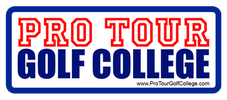
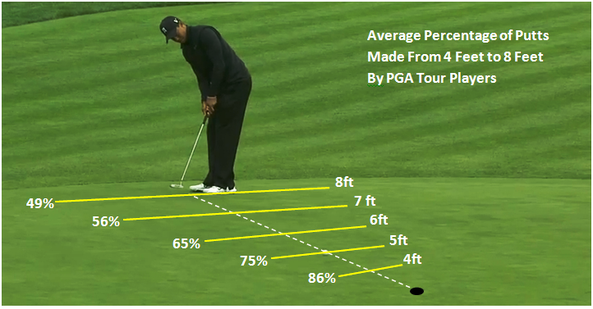
 RSS Feed
RSS Feed



